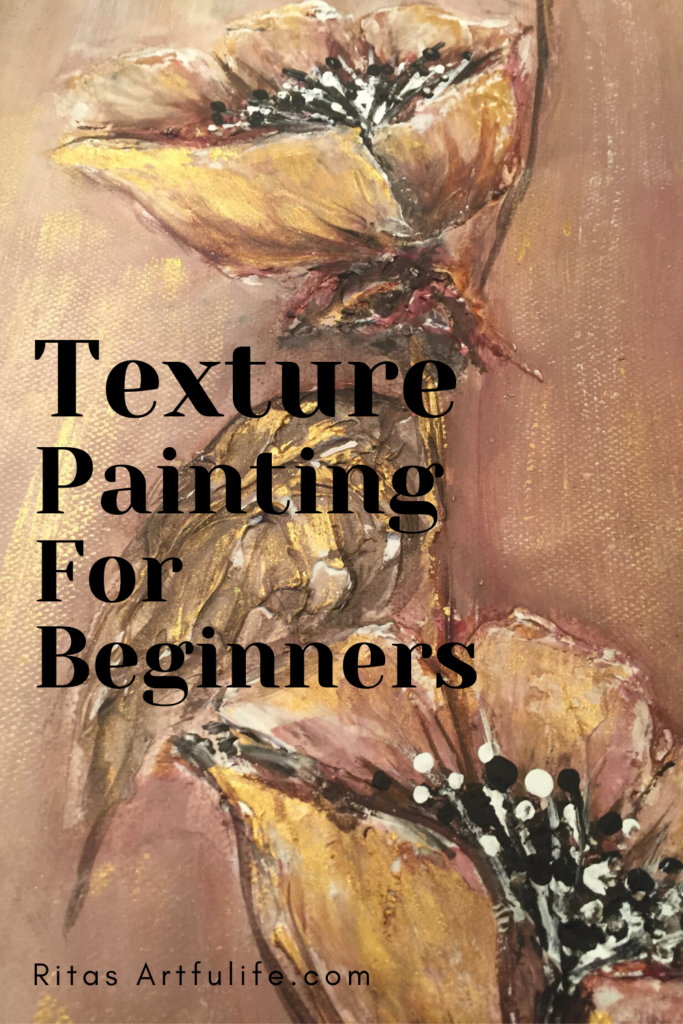The beauty of this type of painting,”Texture painting lesson for Beginner painters”, is that the water helps you achieve subtle shading and adding the gold at the end, adds beautiful highlights, pretty much without trying.
This painting process is done with very wet (watery) paint, so you need to have an old terry cloth towel under your canvas to absorb the excess moisture.
Lightly spritz the canvas all over with water.
Place a small amount of black inside the flowers (behind the front petals) for shading.
Take some Raw Sienna, Magenta & a little black and begin to drop the colors behind the flowers to achieve a darkened background. Stand the canvas up and allow the colors to run a little. Keep adding little amounts of water and more color until you like the effect. While this is still wet, add a bit of white, if desired, to lighten here and there. Wee want the left side of the canvas to be lighter than the right side.


